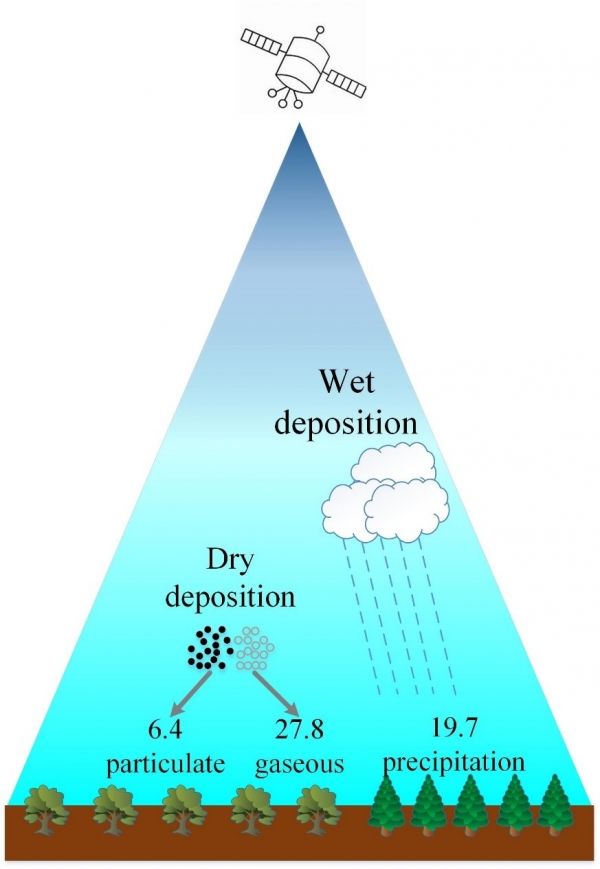Northern China, a hotspot of air pollution, has always been an area of great interest to study owing to the significant impacts on human health, the climate and ecosystems. “However, most studies have focused on the sources and the formation mechanisms, which cannot provide us with knowledge on the fate of various species like reactive nitrogen, i.e., nitrogen deposition,” says Masters student Zhen Wang, from the Institute of International Earth System Science, Nanjing University. “Therefore, in our study we estimated the nitrogen deposition in northern China through a combination of remote sensing data and atmospheric chemical transport model simulations.”
Wang and his coauthors interpreted the spatial and seasonal patterns of inorganic nitrogen deposition using NO2 and NH3 column measurements from satellites and the Model for Ozone and Related Chemical Tracers, version 4 (MOZART-4). The result was a unique “top-down” estimation of nitrogen deposition in northern China, and the findings have been published in Atmospheric and Oceanic Science Letters.
According to this study, the average nitrogen deposition flux in northern China was 54.5 kg N per hectare (ranging from 16.3 to 106.5 kg N per hectare). That is equal to 10% of the annual nitrogen application for the rotation of winter wheat–summer maize in this region. Of the total nitrogen deposition, 36% was deposited via precipitation and 64% was deposited through dry deposition.
Read more at Institute of Atmospheric Physics, Chinese Academy of Sciences
Image: Schematic diagram of atmospheric nitrogen deposition by remote sensing inversion (units: kg N/ha/yr). CREDIT: Zhen Wang / Institute of Atmospheric Physics, Chinese Academy of Sciences


